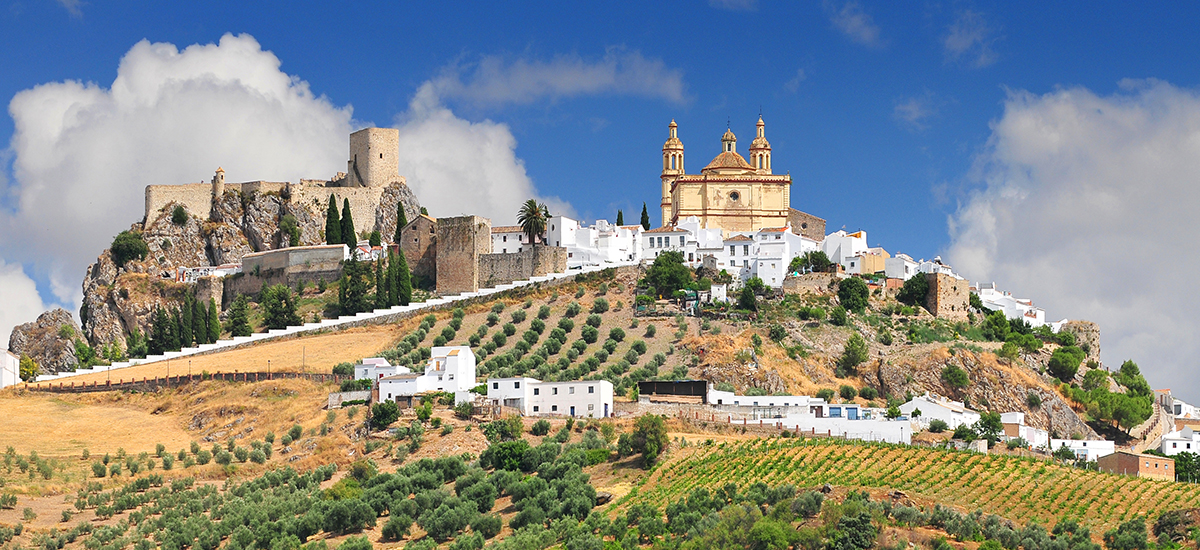
Beauty just around the corner: the Iberian Peninsula
Architecture, art, culture and nature – Spain is so rich in precious places that UNESCO has recognized 48 World Heritage sites there, and Portugal has another 17. The Iberian Peninsula is a beautiful place overflowing with locations that are absolute must-sees at least once in your lifetime. But there’s still some more #BeautyAroundTheCorner to discover. Here they are unveiled by Rimor dealers on this new stage of our journey. After visiting Italy, France and Germany, the tour continues with the #BeautyAroundTheCorner of the Iberian Peninsula.
Spain
GALICIA
BATELAREA | Pontevedra
Castro de Santa Trega
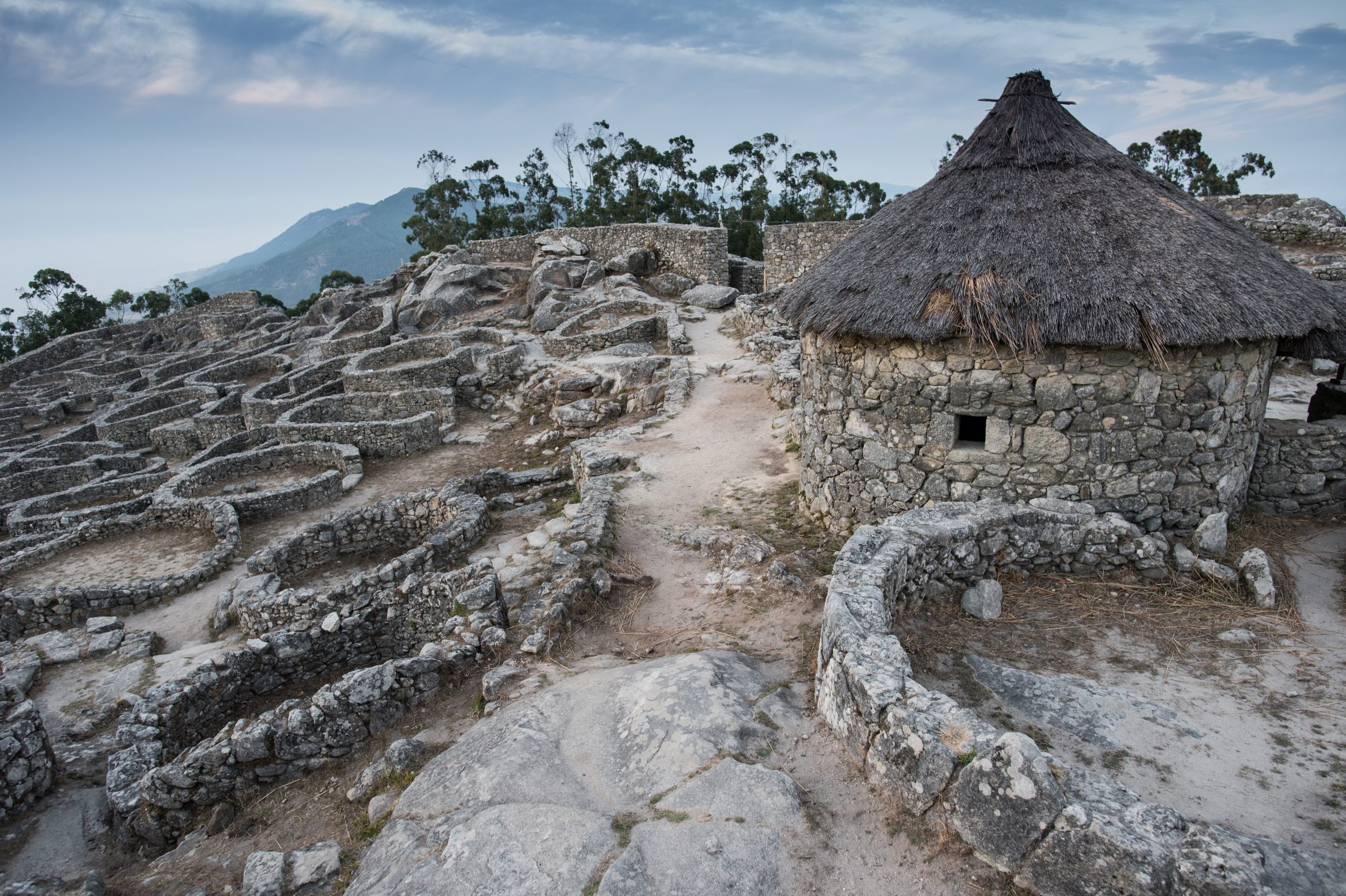
The heyday of Castro de Santa Trega was in the first century BC. Because of its five thousand inhabitants, it was one of the largest cities in the northeast of the peninsula. On a slope at an altitude of 341 metres, today it maintains the peculiarities of that time, with its typical oval houses, each of which is a precise logical order of family units. A visit here is a journey back in time.
CARAVANAS ATIN | Mos (Pontevedra)
Península del Morrazo/Cabo Udra
Though it can sometimes go unnoticed because it’s set between the tourist estuary of Pontevedra and Vigo, once visited, the Península del Morrazo will remain etched forever in your memory. Cabo Udra is a little paradise between crystal clear sea and fine sand. It’s the perfect place to kick back and relax, but also for excursions in the surrounding area where you’ll find lots of unspoilt nature and sweeping panoramas.
ASTURIAS
TRAVELYCARS ASTURIAS | Gozón (Avilés)
Tazones
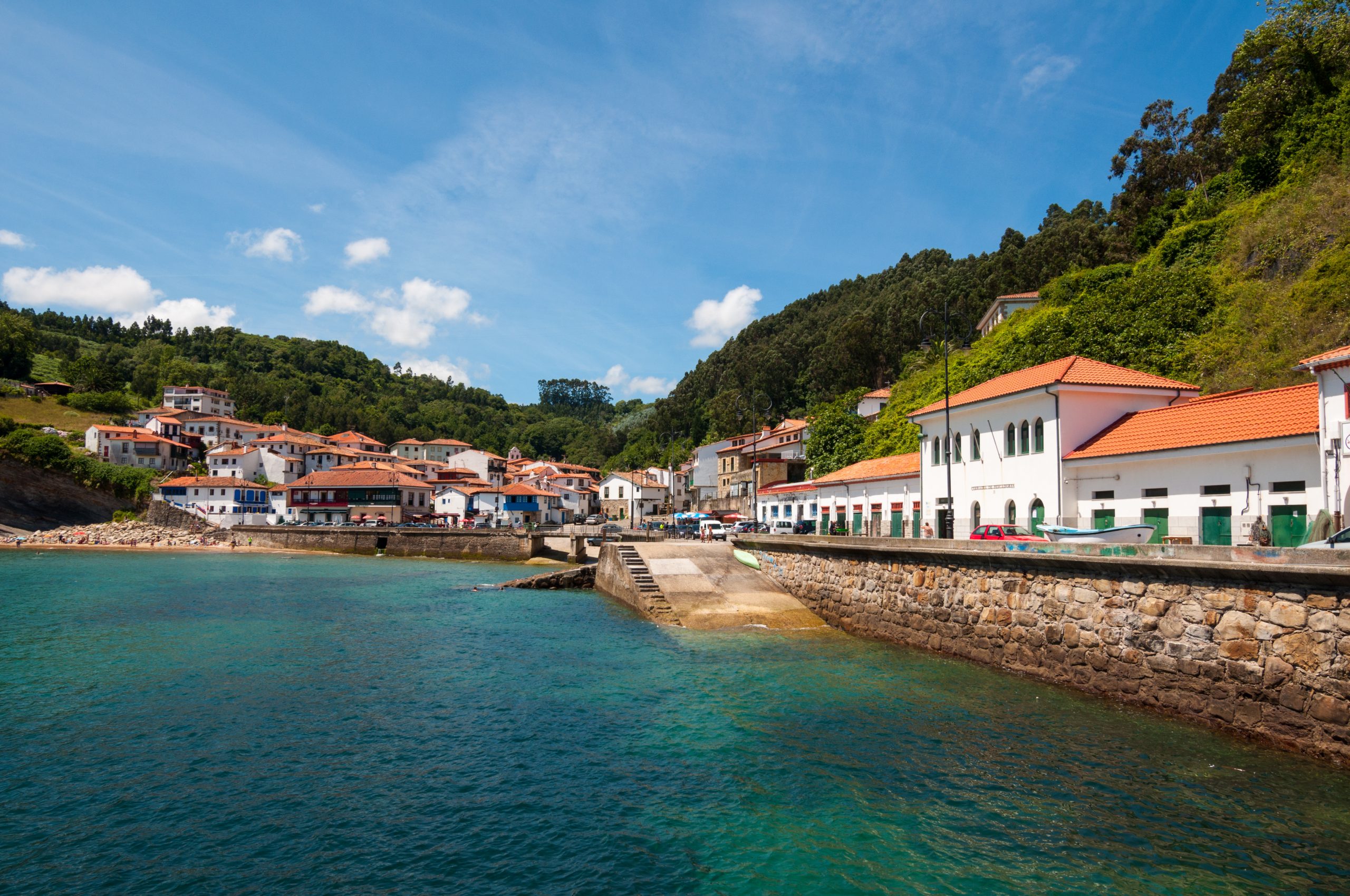
It was here in 1517 that the future Charles V landed in Spain for the first time. Arriving from Flanders to take possession of his grandparents’ kingdom, he moved to nearby Villaviciosa before continuing on his way to Valladolid, where he was to take the oath as king. Declared a Festival of Touristic Interest in the Principality of Asturias, this event is celebrated every August with a historical recreation of the landing.
PAIS VASCO
CARAVANAS MIKEL | Vizcaya
Bermeo
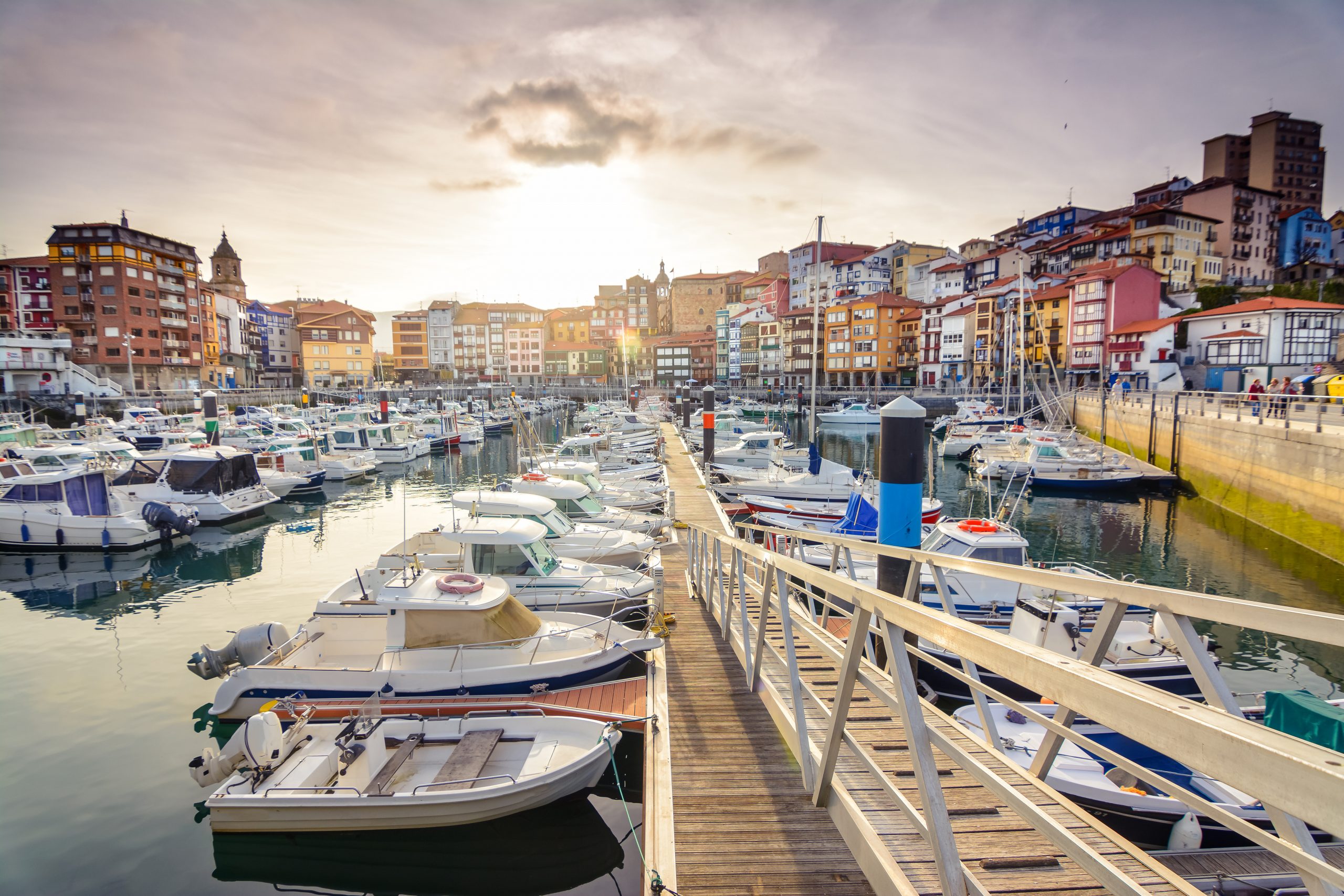
The Ercilla Tower with its Fisherman’s Museum, the Saint Juan Gate, the old town and the commercial and tourist port are the main places of interest of Bermeo, the most populous city alongside Guernica, of the Comarca di Busturialdea in the Basque Country. A visit to Gaztelugatxe, the Spanish islet on which the hermitage of the same name is located, is an absolute must. To reach it, you will have to climb 231 steps overhanging the ocean.
CASTILLA Y LEON
CARAVANAS DIEZ | Briviesca (Burgos)
Frías
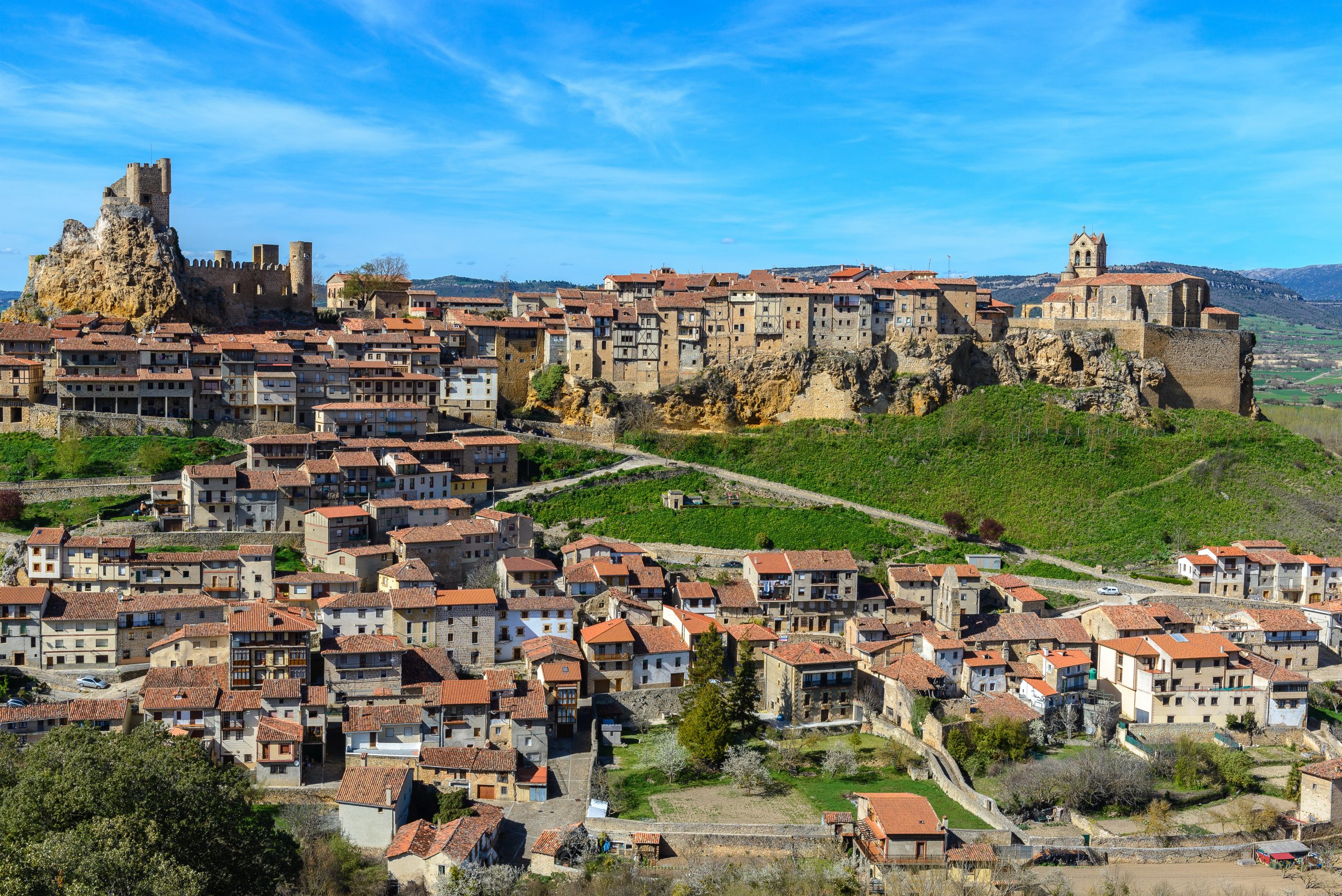
One of the most popular attractions in Frías (originally called Agua Frias, then simply Frías) is the medieval bridge over the Ebro. Roman in origin, it was rebuilt several times in the Middle Ages. The castle of the same name, its defensive walls, the typical tuff and wood houses developed upwards and downwards (due to the particular conformation of the rocky terrain), are all in Frìas as well and certainly deserve the admiration of those who visit. And for nature lovers, a stop to see the Molinar river with its enchanting waterfalls should definitely be on your itinerary.
CARAVANING PALENCIA | Palencia
Covarrubias
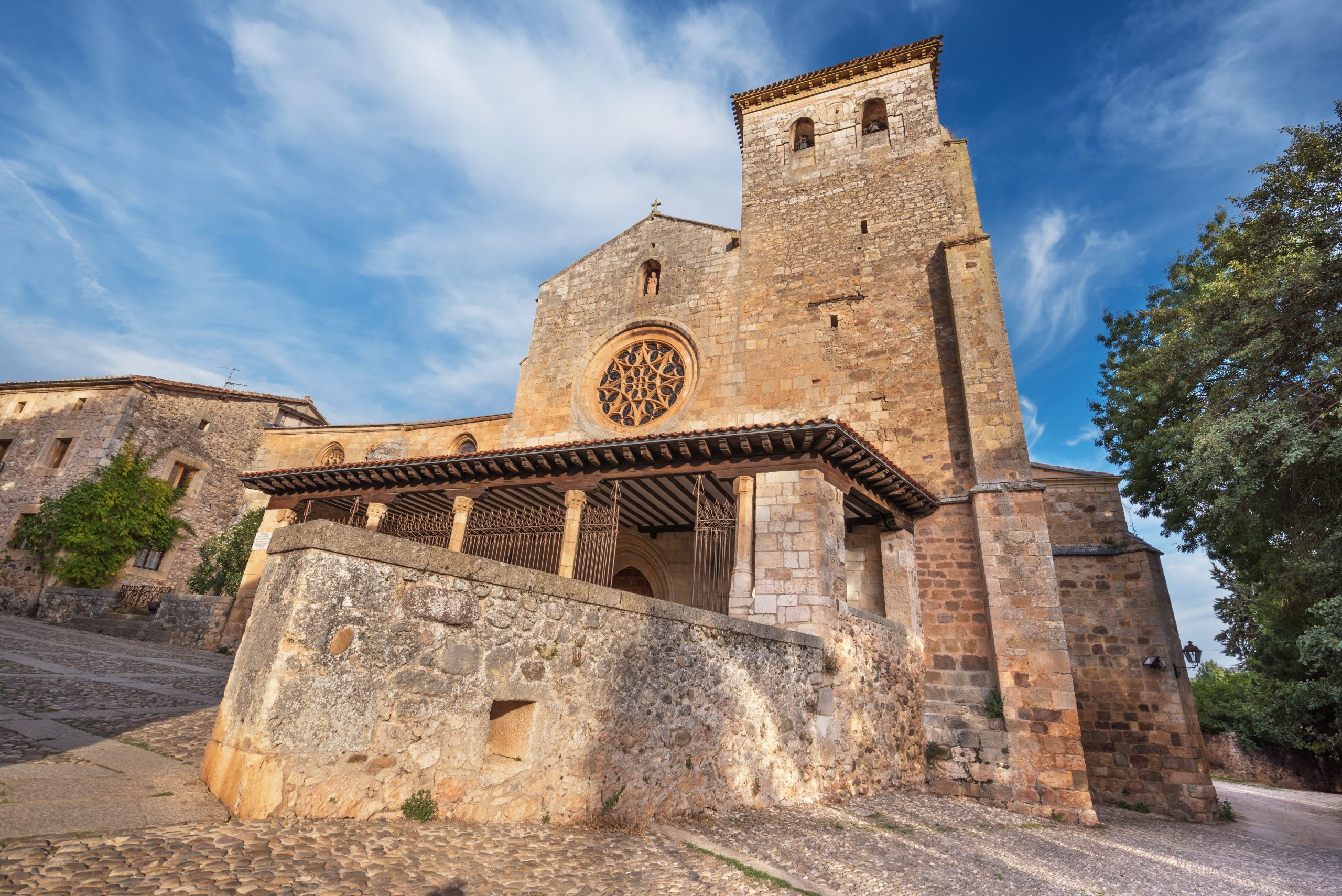
The red caves in the surrounding area are what give this place its name. A Spanish municipality of 560 inhabitants located in the autonomous community of Castile and León, Covarrubias has a typical Castilian urban design, with arcaded streets and houses with wooden structures. Sergio Leone also fell in love with its charms: as not far from the centre near the river Arlanza, he shot scenes from “The Good, the Bad, the Ugly” here.
ARAGON
TOPCARAVANING | Zaragoza
Agüero
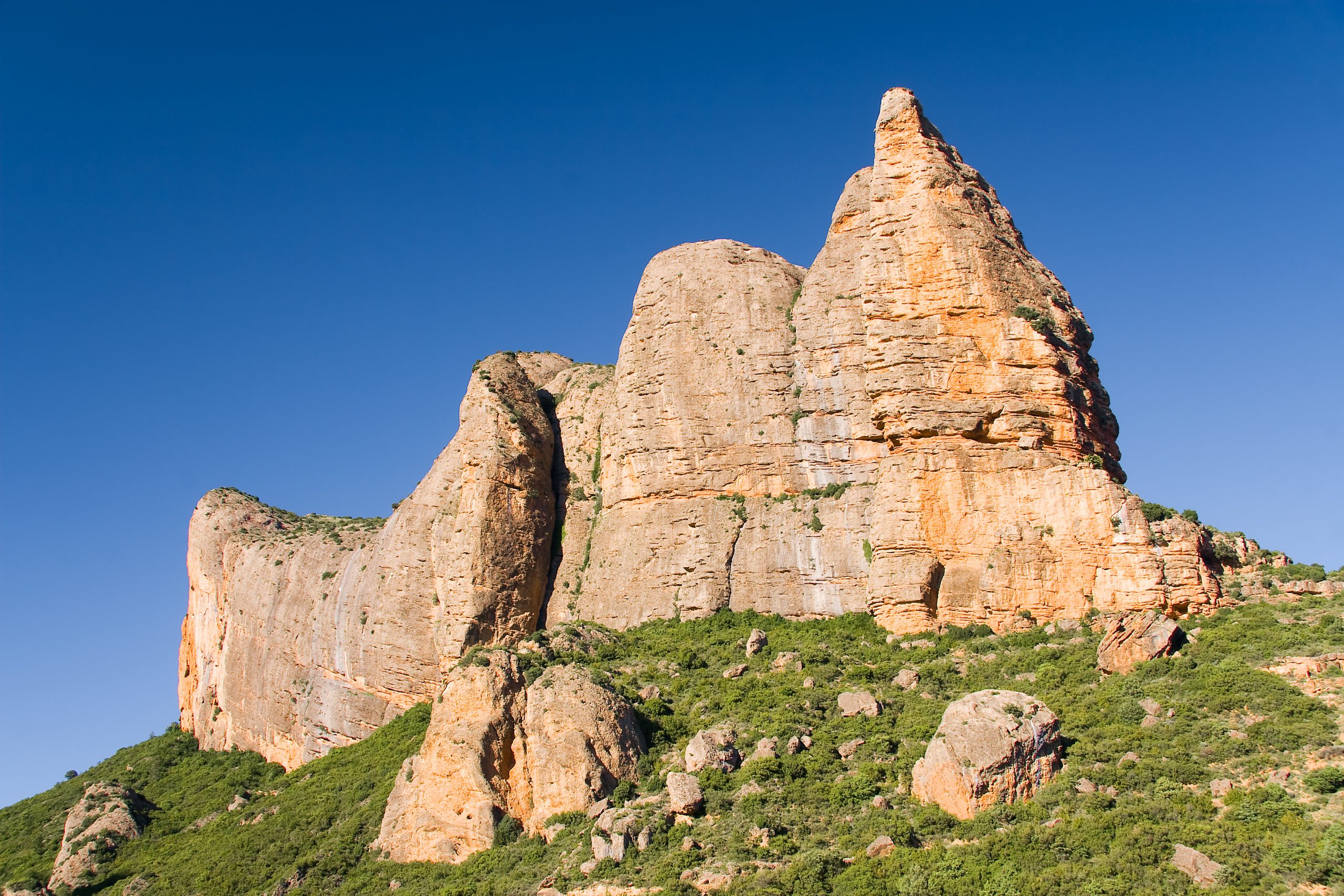
They majestically line the city like stone shields. They’re the Mallos de Agüero, a series of rock formations that rises up to 200 meters above the village in the province of Huesca, Aragon. Their shape and height make them an ideal destination for climbing. But that’s not all – they’re also the perfect place to observe fascinating colonies of birds nesting on those very ridges. Truly an unforgettable view.
CATALONIA
AUTOCARAVANAS SAM | Montblanc
Coves de l’Espluga
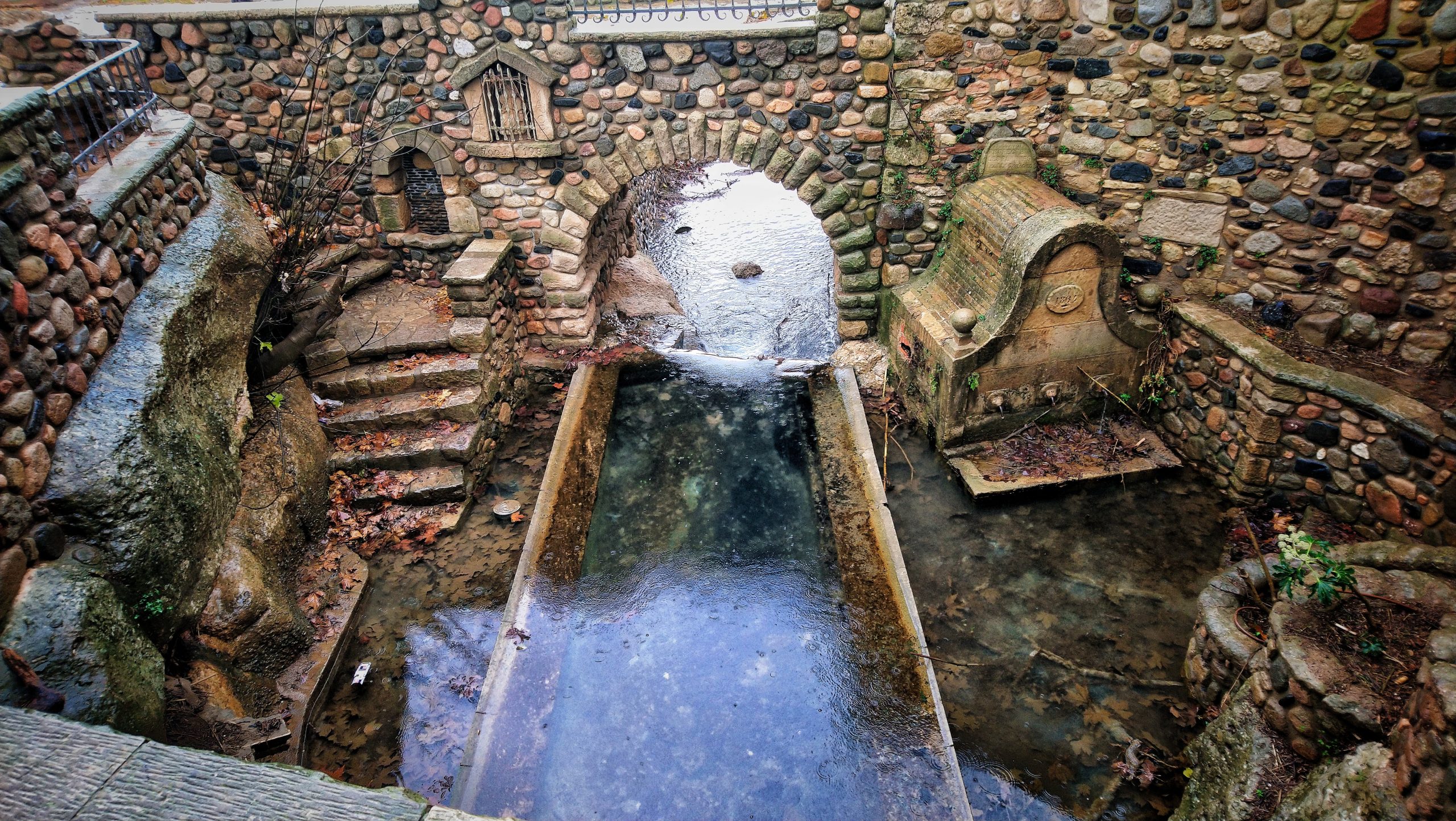
With its underground system, Coves de l’Espluga is one of the longest coves in the world. Technically speaking, it’s the seventh largest cave in the world. An indoor museum complete with virtual projections allows both the young and young at heart to learn about life underground in prehistoric times. This wonderful visit to the Coves de l’Espluga ends with a true-to-life-size entrance to a Neolithic settlement.
CARAVANAS 1000 | Terrassa (Barcelona)
Montserrat
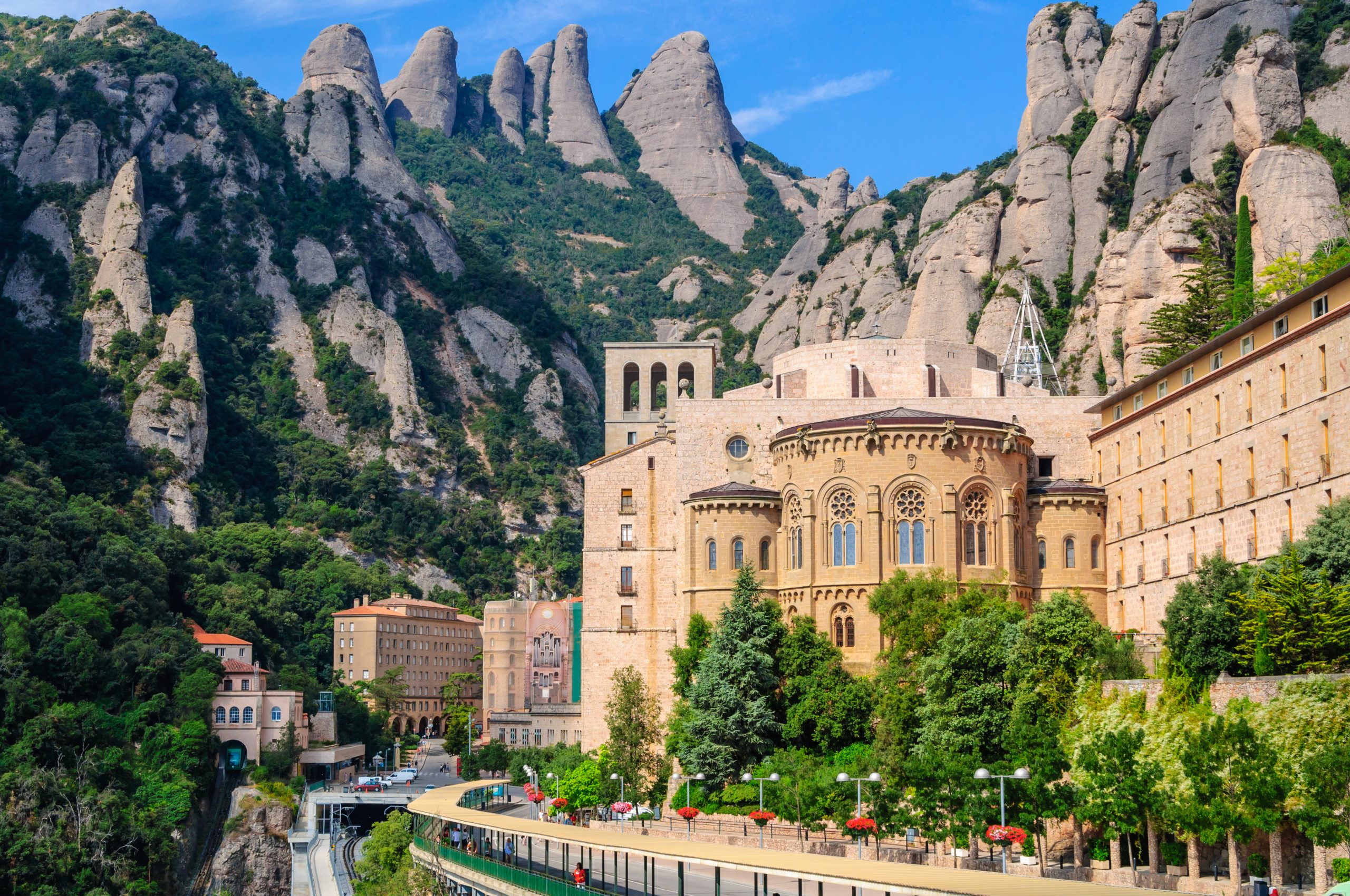
Inside is preserved the statue of the Black Madonna, making the monastery of Montserrat one of the main destinations for pilgrims from all over the world. In addition, it is a Gothic building of great architectural importance. An hour and a half from Barcelona, you can reach the monastery of Montserrat by cable car or cogwheel train. For the more experienced, the ancient footpath that communicates with the valley floor is still accessible.
CARAVANAS MIGUEL | Lleida
Terres de Lleida
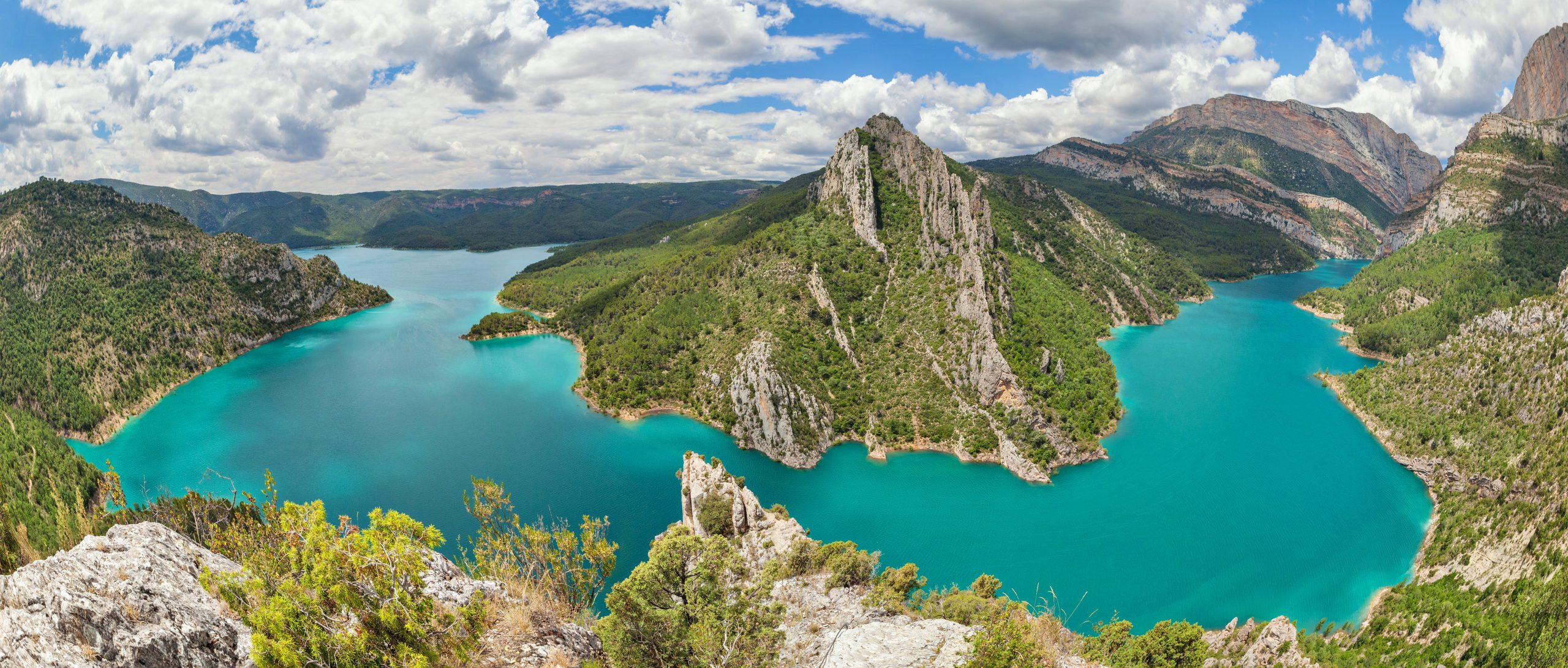
Tradition, nature and culture – these are the elements that make the Terres de Lleida one of the most spectacular places in Spain. One destination, many ways to see it. You can go through its many waterways by kayak, or on foot or by bike to slowly imbibe its natural wonder. Its cultural heritage is not to be missed either, such as its cathedrals, Romanesque churches, Palaeolithic rock art and fascinating castles.
CARAVANING CITY | Gava / Barcelona
Sitges
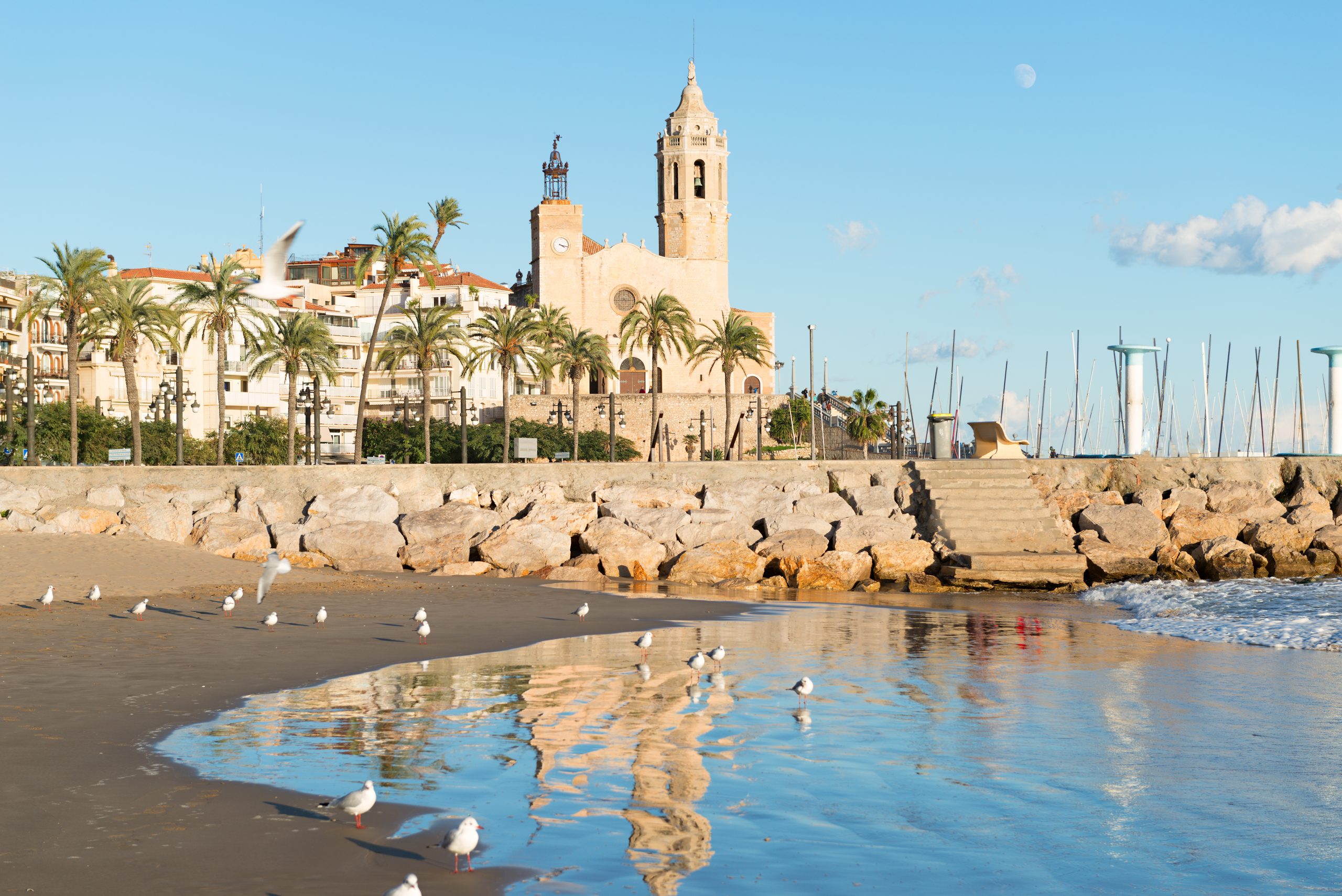
Four kilometres of beach and crystal clear Blue Flag sea. Sitges, the jewel of the Costa Daurada and about 40 km south-west of Barcelona, isn’t just sand and sea, it’s also known for its Catalan modernist architecture, monuments and art works as well. A holiday centre for both families and young people, it offers very interesting visits, such as the church of Sant Bartomeu, the Bodegas Güell (designed by Antoni Gaudí and Francesc Berenguer), the Cau Ferrat Museum, the house of the painter and writer Santiago Rusiñol, the Museo de Maricel and a modernist building that houses works of art ranging from the medieval period to the 20th century.
ESMI CAMPING | Besalu (Gerona)
Rupit
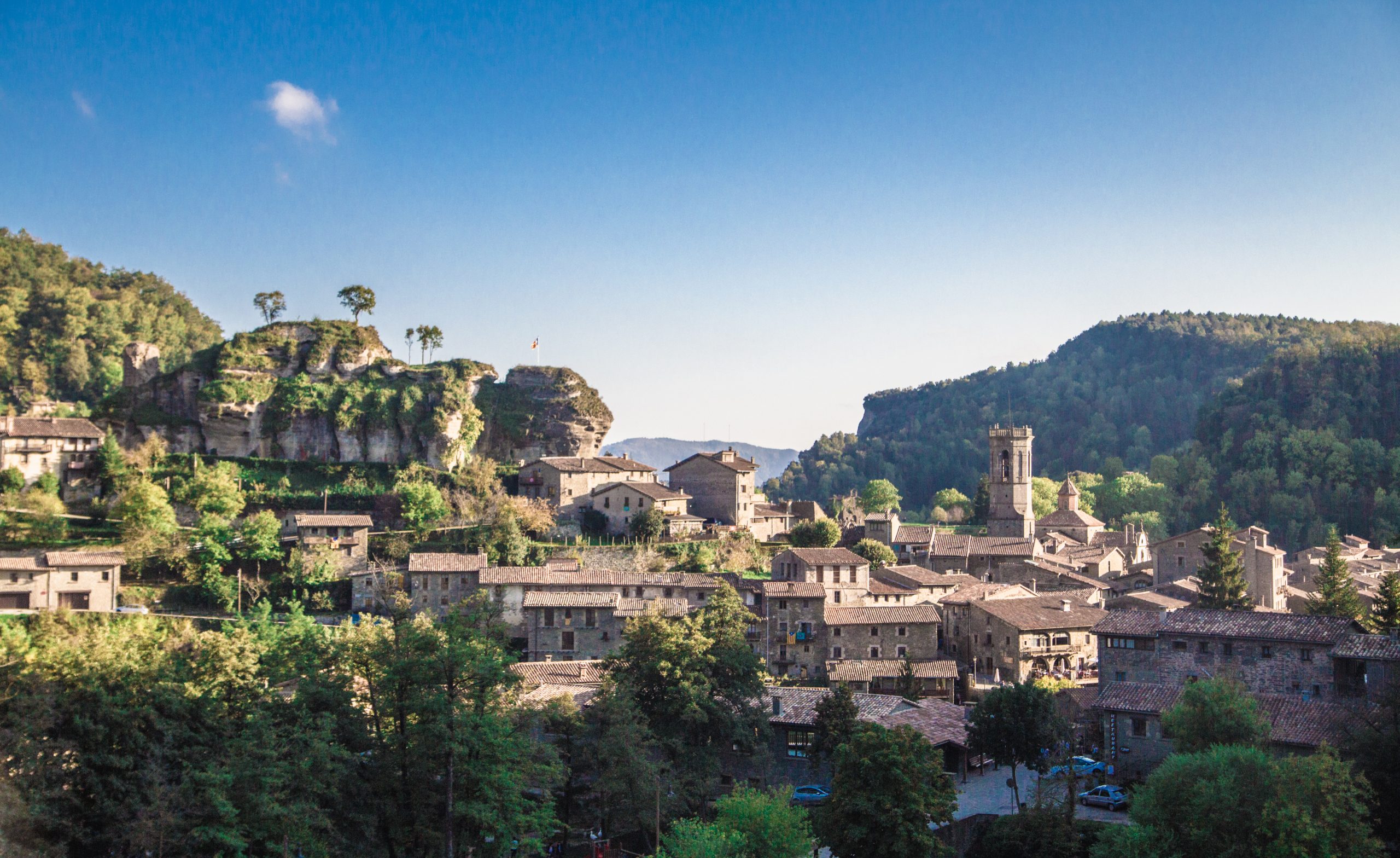
The charm of this Catalonian city lies first and foremost in its location on the slopes of a cliff. Crossing the rope suspension bridge will surely excite the senses, especially when you admire the river below and the town centre with its stone façades, balconies, wooden windows and doors and inscriptions on some of the arcades. The Church of San Miguel is yet another reason to visit, with its baroque style and white façades, which contrast beautifully with the stone architecture of the rest of the city.
NAUTICARAVAN | Viladecans Barcelona
Castle of Cardona
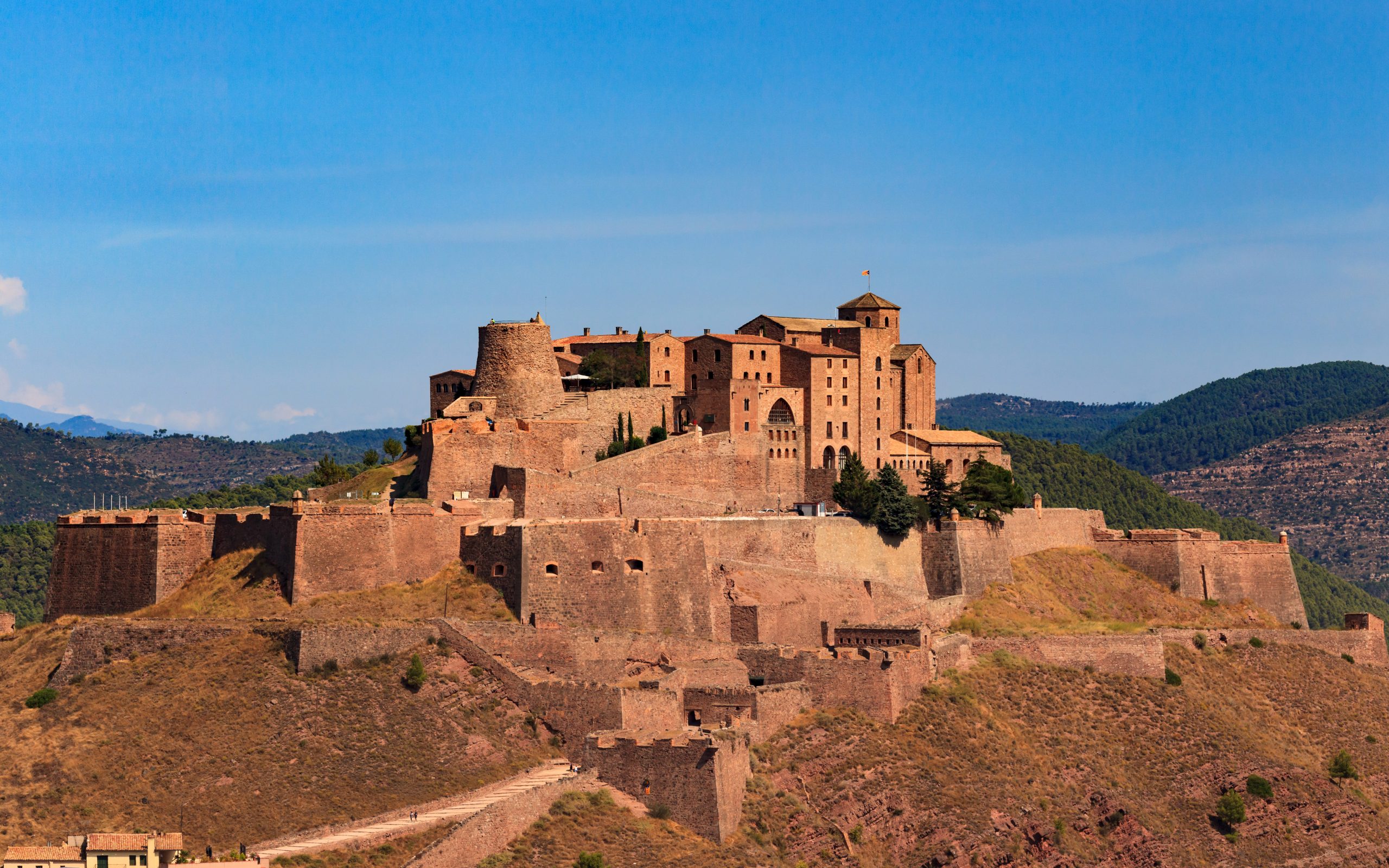
There is a legend that makes the Castle of Cardona even more mysterious. The spirit of Adelaide, daughter of a local Viscount, is said to be imprisoned within the cylindrical structure. Her sin? Falling in love with a lord who was an enemy of her house. Beyond the legend, it is the grandeur of the castle and its location that make this castle a place full of mysterious charm, located 589 metres above sea level between Manresa and Berga in the north of the province of Barcelona.
MADRID
NODES25 | San Fernando De Henares (Madrid)
Calatañazor
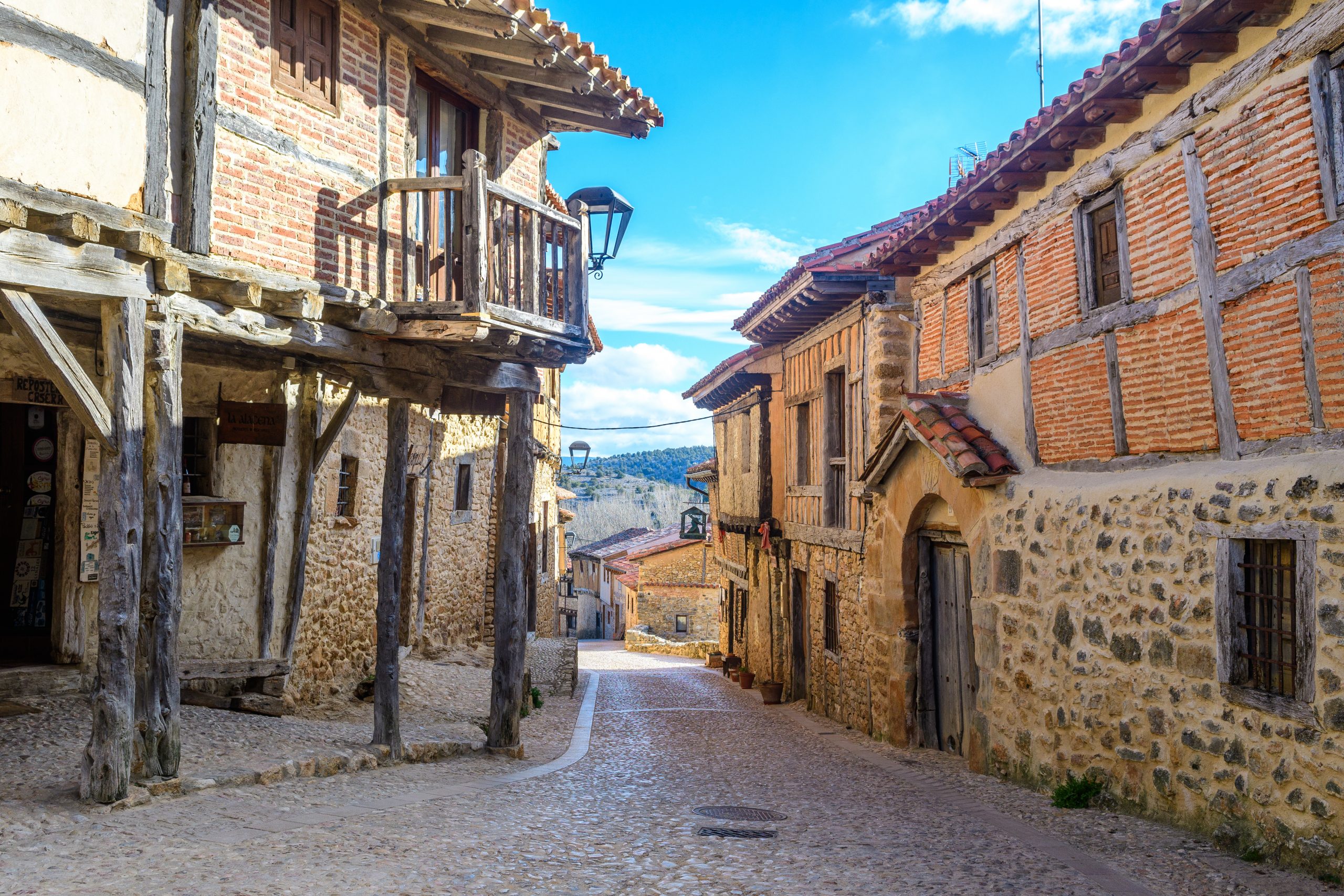
Calatañazor might have only 61 inhabitants, but its many characteristic aspects will give you an unforgettable travel experience. It is said that its name comes from Arabic and means “castle of vultures”. Sometimes the sound of the birds still seems to echo in this place, and the façades of the houses with juniper wood structures, conical fireplaces, cobblestone floors and the Mozarabic effigies of the churches have remained unchanged since the Middle Ages.
CASTILLA-LA MANCHA
CARAVANAS SESEÑA | Seseña, Toledo
La Alberca
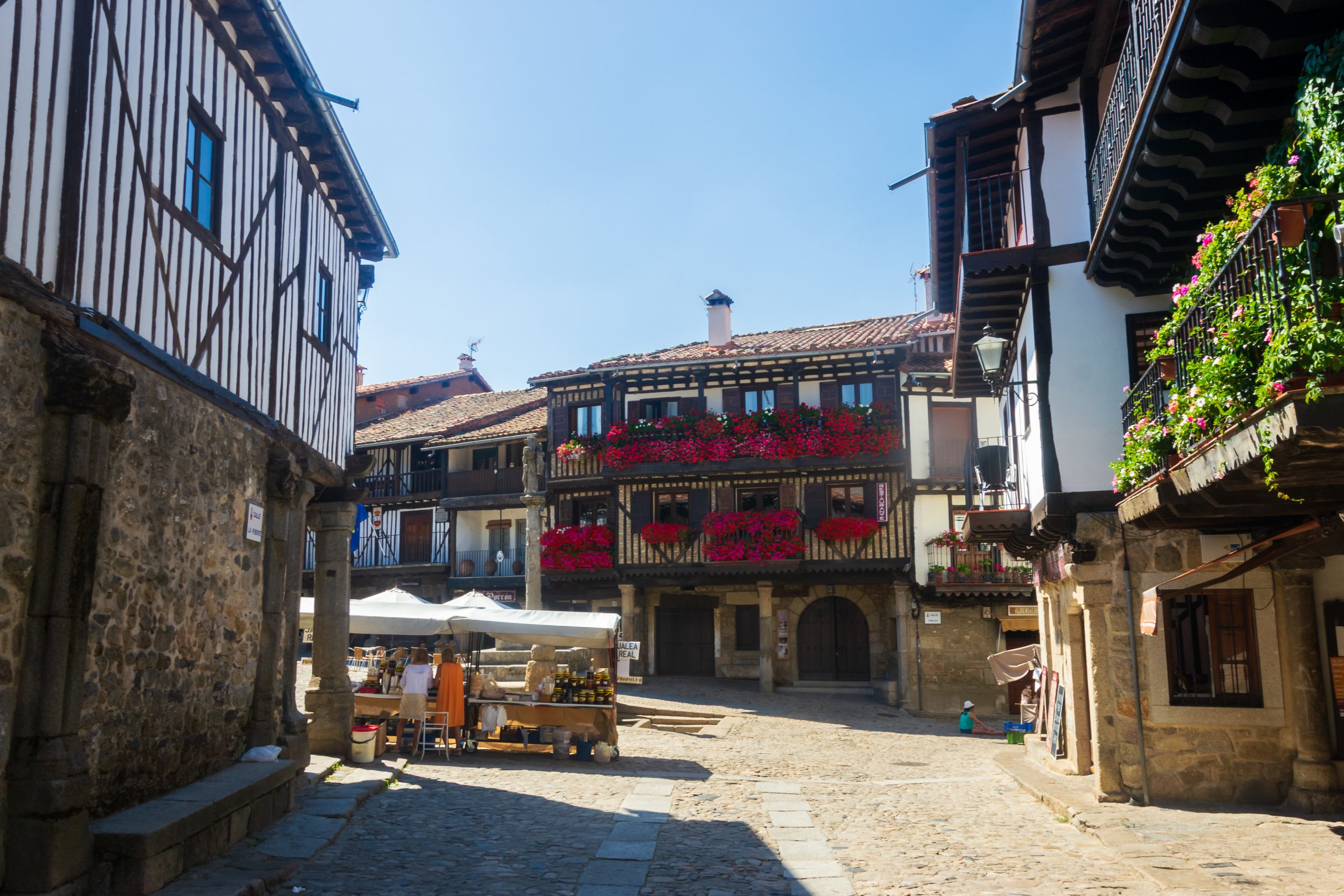
The Alberca in the southwest corner of Castile and León, was the first rural town in Spain to be declared a National Historic Monument. The heart of the town is the Plaza Mayor, the centre of life in La Alberca. The parish church of the Assumption, built in the 18th century, is the most representative religious building, and the House/Museum Sátur Juanela, retells the history of the town. Don’t miss the Canchal de las Cabras Pintadas de las Batuecas, a rock formation of prehistoric origin that’s home to enigmatic rock paintings.
VALENCIANA
MOVIL RODAN | Castellón De La Plana, Castellón
Albarracín
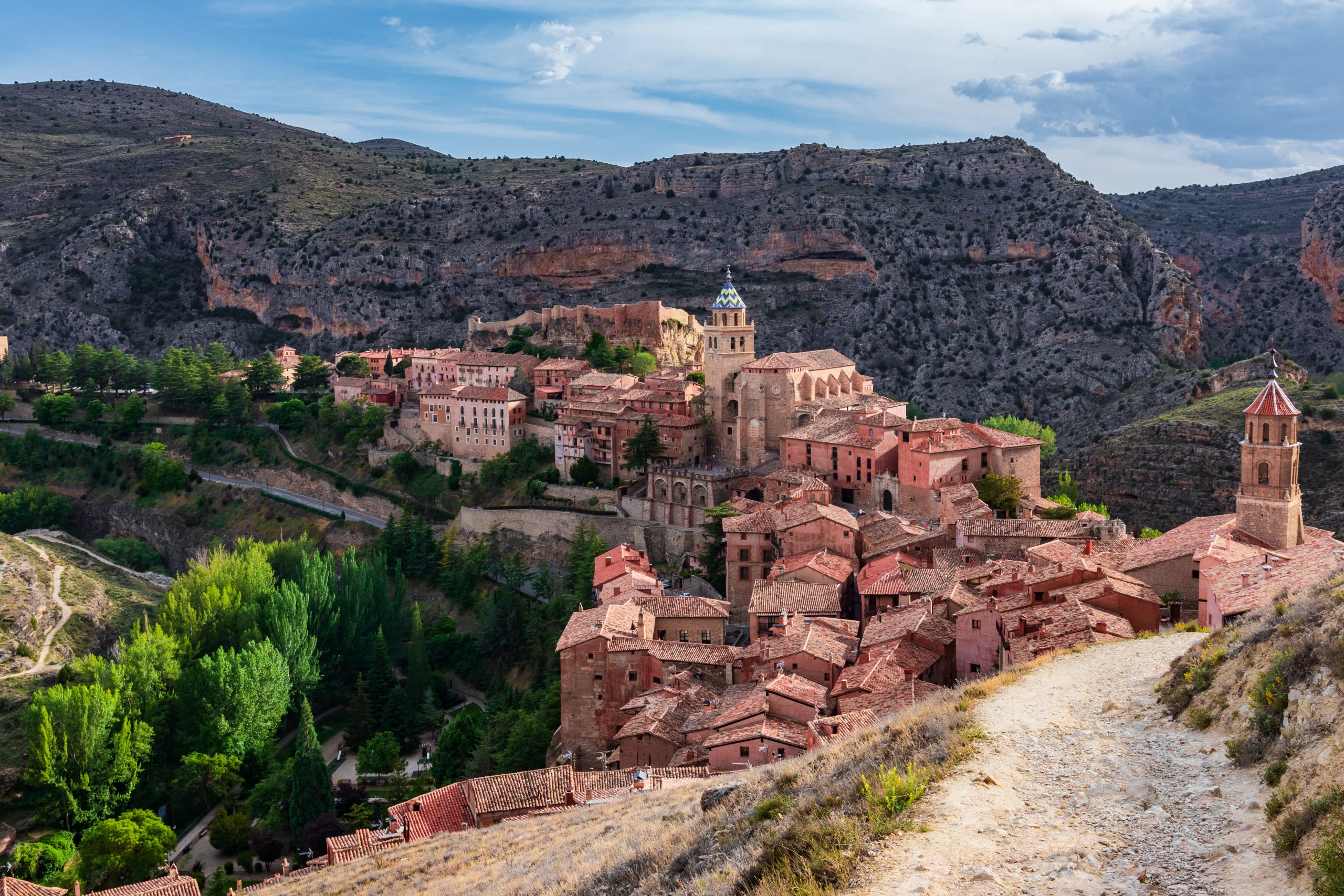
Once the ancient capital of a kingdom of Taifa, the small town of Albarracín is today an Asset of Cultural Interest which still retains its Islamic and medieval features. Located in the autonomous community of Aragon, what strikes you at the first sight of this town is the imposing fortification. Once in the town itself, you’ll discover the steep streets that lead to the Plaza Mayor and the belvedere on the Guadalaviar River, whose flow has generated a huge ravine.
VALCARAVAN | CASTELLAR / Valencia
Chera-Sot de Chera Natural Park

Chera-Sot de Chera is a celebration of nature. Surrounded by olive and almond trees, water and geology stand out as its most representative features. The river landscapes created by the river Sot, the area surrounded by orange and carob trees, the “La Hoz” ravine, the Buseo basin and the abundance of natural springs and waterfalls are just some of the most representative elements of an area with gradients ranging from 350 metres in the Buseo basin to 1,170 metres at the Cinco Pinos peak. It’s also home to several protected species, such as the aquatic turtle.
MURCIA
CARAVANAS MURCIA | Torres de Cotillas / Murcia
Bateria de Castillitos

It was built to protect the entrance to the Bay of Cartagena alongside its twin, the Batería de Cenizas. The Bateria de Castillitos is a fortification built between 1933 and 1936. Overhanging the sea, it’s an imposing and characteristic architectural work whose brown colour and the texture of the rock were chosen to make the battery seem invisible from afar.
ANDALUCIA
CARAVANAS LA ALGABARRA | Sevilla
Castle Olvera

In the province of Cadiz in southern Spain, there’s a castle perched on a rock on top of a peak, and as if to protect it, a village sits underneath. The castle of Olvera, a fortress on a rocky cliff in the centre of the town of the same name, seems to have leaped out of the pages of a fairytale. Situated atop a rock at over 600 metres above sea level, it is the highest point of the town. Dating back to the 12th century, it’s undergone various reconstructions over time, the most significant one being that of the Christians.
CARAVANAS SANCHEZ CASTRO | Baena Cordoba
Castle Zuheros
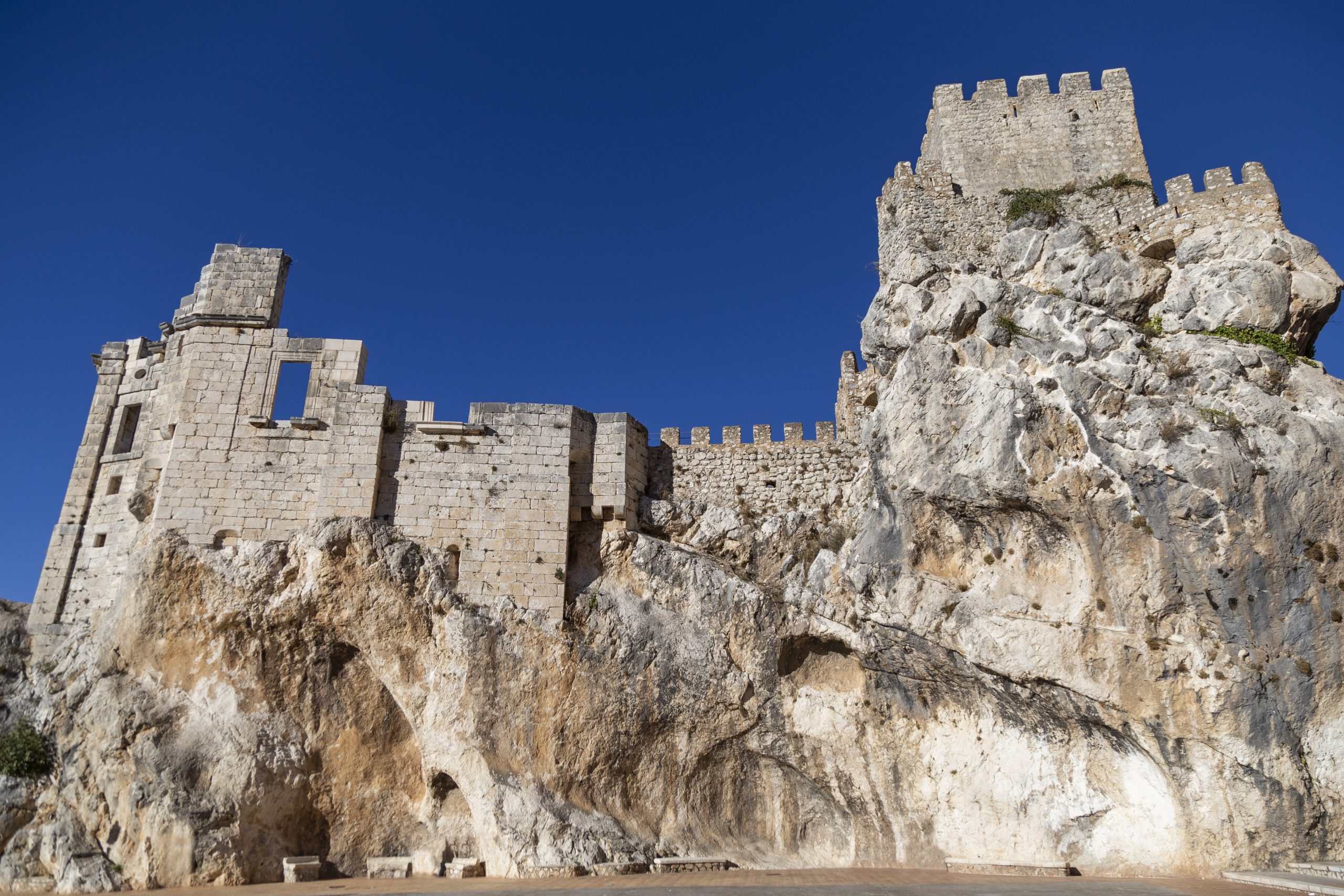
The Castle of Zuheros is located atop a rock in the village of the same name in the province of Cordoba. Its origins are unclear. According to some testimonies, it could date back to the 9th century and have been used to protect the road between Cordoba and Granada. During the 14th century, a Renaissance building was added to the main complex. A combination that, together with its location, makes this castle spectacular.
CARAVANAS SEVILLA | Gelves (Sevilla)
Gruta de las Maravillas
There is no doubt that a visit to the Gruta de las Maravillas is truly a marvel. Located in the urban centre of Aracena in the north of the province of Huelva, it features a horizontal development of three superimposed levels making up 2,230 metres of tunnels originating from the action of the water on the limestone and marble of the Cambrian. How far back does it date? More than 500 million years ago. The tourist route allows you to visit 1,200 metres distributed on two different levels (the third is not accessible to the public).
CARAVANAS PUERTO | El Puerto De Santa Maria (Cadiz)
Cádiz
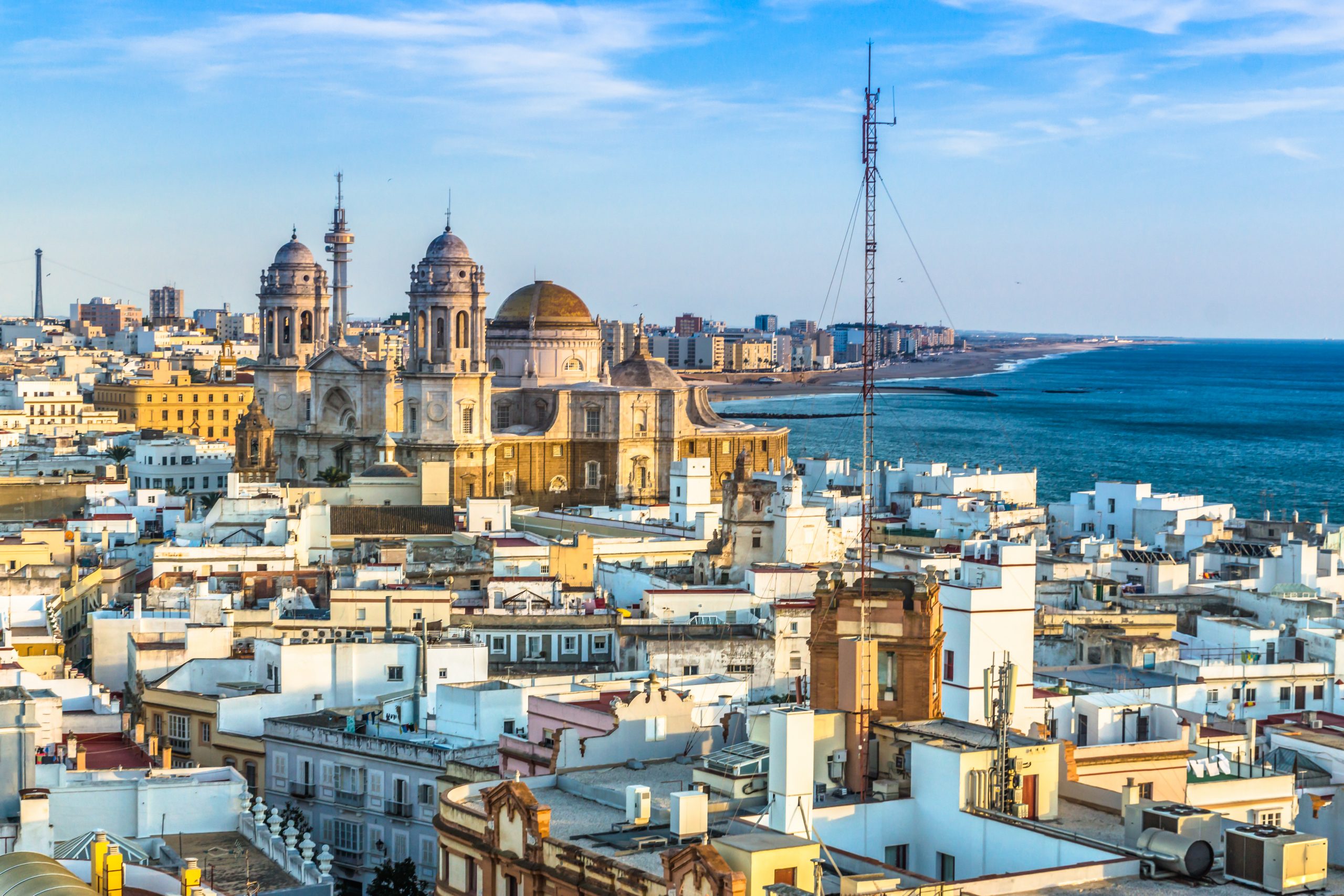
A city that can trace its origins back to 1,100 BC and was built by the Phoenicians, today Cádiz is the oldest inhabited city in Europe. But this town is also remembered for the role it played in the discovery of the Americas – it was from here that Christopher Columbus set off on his second journey. It’s a fundamental destination for anyone who wants to get to know Spain and its history, but it’s also a place where you can find relaxation on the beach La Caleta and visit the majestic Cathedral (Catedral de Santa Cruz sobre el Mar), castles and museums.
TENERIFE
CARAVANAS ARURE | Santa Cruz De Tenerife
Masca
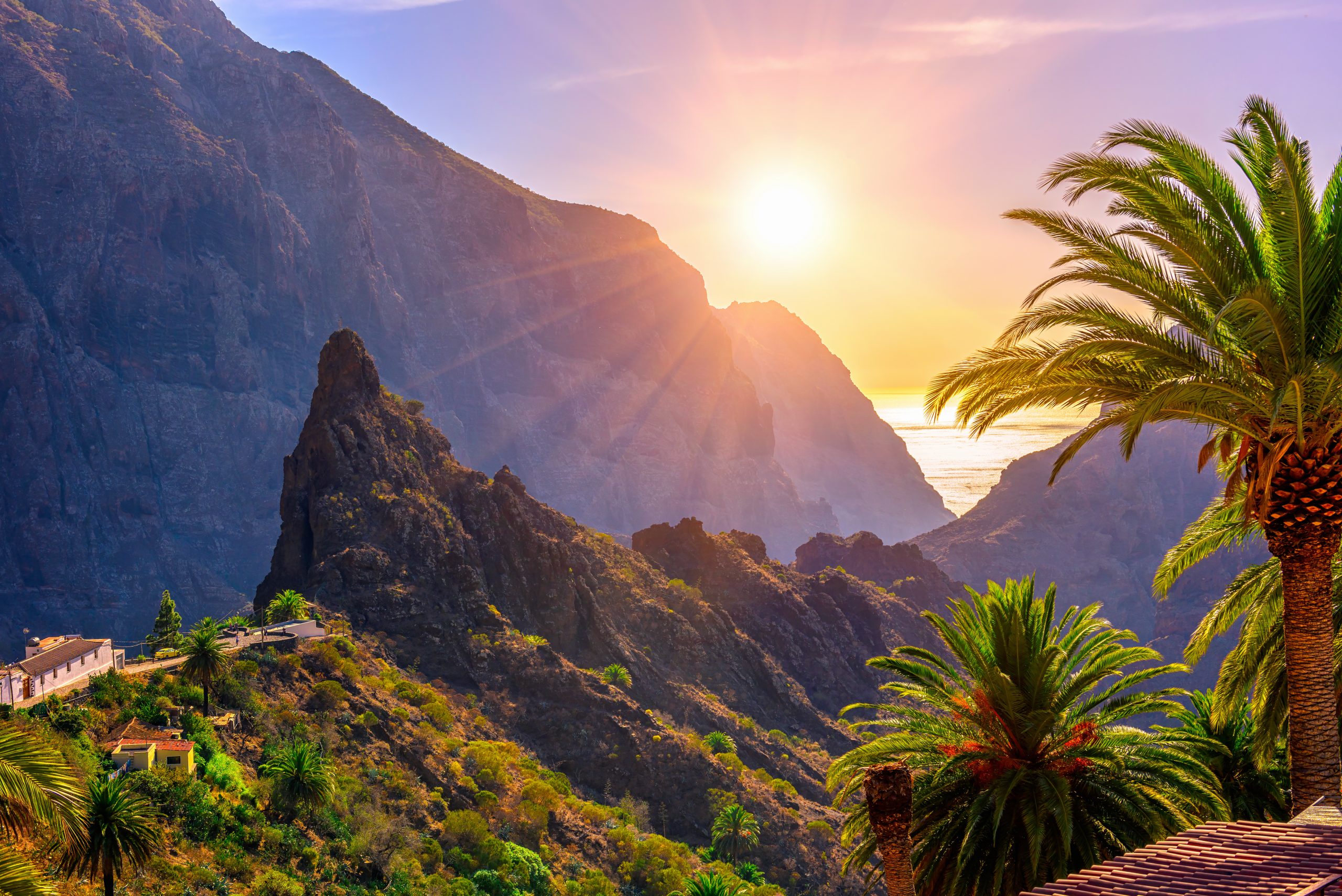
In Tenerife, there’s one place that’s remembered by visitors for being among the most picturesque on the island. Getting there might be a lot of effort, but it’s definitely worth it. It’s a magical little village called Masca, with houses “clinging” to the narrow ridges. It’s located in the Teno massif at the north-west tip of the island of Tenerife. With just 100 inhabitants, this little village is in municipality of Buenavista del Norte. The route to reach it is part of an exciting journey through deep ravines and cliffs directly over the ocean.
Portugal
DEMOVE | Agualva Cacém
Ericeira
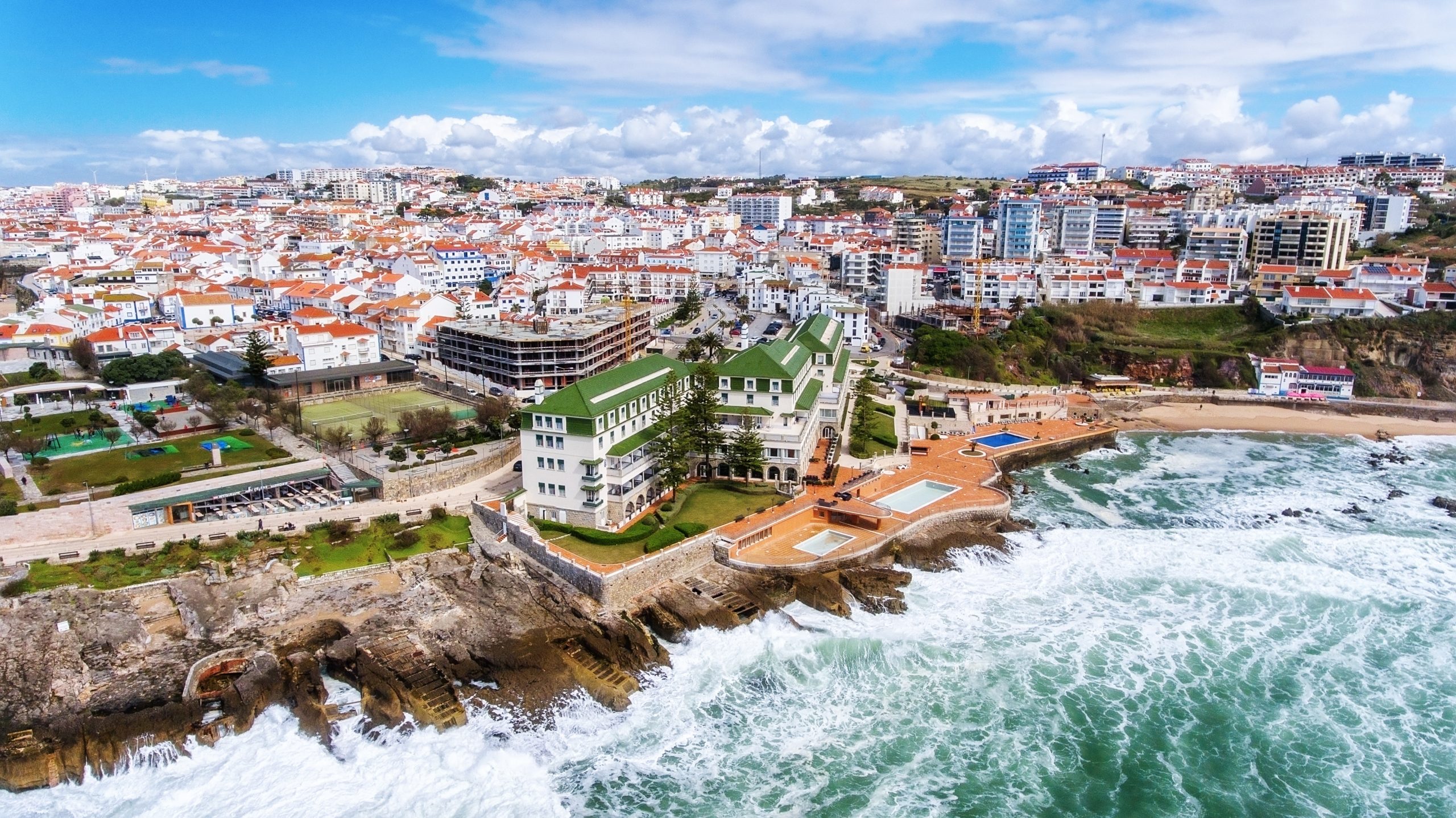
An old fishing village with typical white, blue and orange houses. About 50 kilometres from Lisbon lies the village of Ericeira, an exemplary beauty around the corner and just one of many to be found in Portugal. Walking through the narrow streets of this village, you feel immersed in the traditions handed down within families throughout the generations, where colourful paintings and mosaics grace the façade of each house, rendering each one a work of art. It’s especially a destination for anyone who loves surfing and ocean waves.

